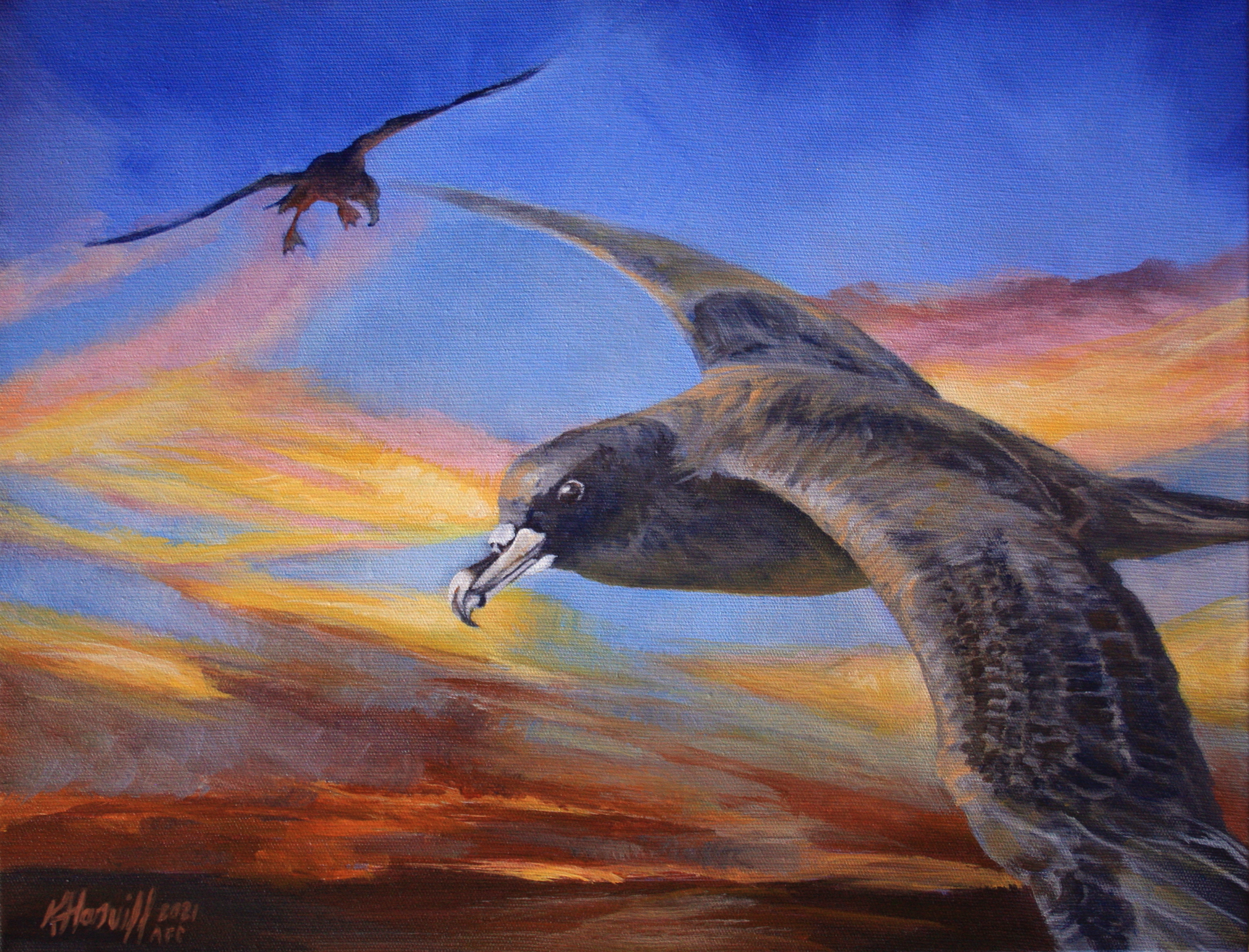"Seabird Sunset", acrylics by Kitty Harvill, after a photograph by Dimas Gianuca
Caitlin Frankish (British Antarctic Survey, Cambridge, UK) and colleagues have published open access in the journal Aquatic Conservation: Marine and Freshwater Ecosystems on diving behaviour of White‐chinned Petrel Procellaria aequinoctialis (Vulnerable).
The paper’s abstract follows:
Many seabirds dive to forage, and the ability to use this hunting technique varies according to such factors as morphology, physiology, prey availability, and ambient light levels. Proficient divers are more able to seize sinking baits deployed by longline fishing vessels and may return them to the surface, increasing exposure of other species. Hence, diving ability has major implications for mitigating incidental mortality (bycatch) in fisheries.
Here, the diving behaviour and activity patterns of the most bycaught seabird species worldwide, the white‐chinned petrel (Procellaria aequinoctialis), tracked from Bird Island (South Georgia), are analysed. Three data sources (dives, spatial movements, and immersion events) are combined to examine diverse aspects of at‐sea foraging behaviour, and their implications for alternative approaches to bycatch mitigation are considered.
The tracked white‐chinned petrels (n = 14) mostly performed shallow dives (<3 m deep) of very short duration (<5 s), predominantly during darkness, but only 7 and 10% of landings in daylight and darkness, respectively, involved diving, suggesting that surface‐seizing is the preferred foraging technique. Nonetheless, individuals were able to dive to considerable depth (max = 14.5 m) and at speed (max = 2.0 m·s−1), underlining the importance of using heavy line‐weighting to maximize hook sink rates, and bird‐scaring lines (Tori lines) that extend for long distances behind vessels to protect hooks until beyond diving depths.
With thanks to Richard Phillips.
Reference:
Frankish, C.K., Manica, A., Navarro, J. & Phillips, R.A. 2021. Movements and diving behaviour of white‐chinned petrels: diurnal variation and implications for bycatch mitigation. Aquatic Conservation: Marine and Freshwater Ecosystems https://doi.org/10.1002/aqc.3573.
John Cooper, ACAP Information Officer, 15 April 2021

 Español
Español  English
English  Français
Français 